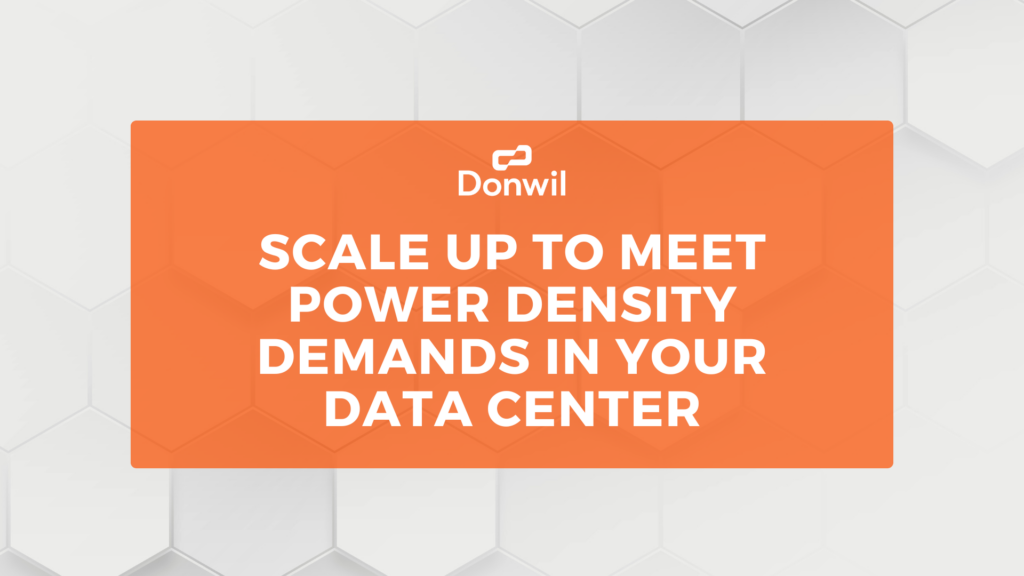Is your data center development running into obstacles? You’re not alone. Many data center managers and technology executives are grappling with the same challenge—limited space in the face of increasing workloads.
However, limited space doesn’t mean you have to limit your innovation. In fact, with the right approach, your power density demands can be met, turning constraints into opportunities for efficiency and growth.
High-density racks are revolutionizing how we think about data center efficiency. These innovative solutions allow you to optimize existing space, reduce operational costs, and prepare for future growth—all without a complete infrastructure overhaul.
The Growing Importance of Power Density
The ability to efficiently manage and store vast amounts of information is crucial. Power density plays an essential role in this equation. It’s not just about accommodating more demanding workloads; it’s also a financially smart move. By installing higher-density racks, organizations can significantly reduce the number of racks they need to maintain, along with the associated cabling, power distribution units, and other infrastructure. This translates to lower operational costs and a smaller physical footprint—an essential consideration in today’s competitive landscape.
Why Power Density Matters
Power density is a measure of how much power is used per unit of area in a data center. Higher power density means more computational power can be packed into a smaller space. This is increasingly important as workloads grow and data centers aim to maximize their resources.
Financial Benefits
The financial benefits of higher power density are substantial. By maximizing the utilization of existing space, organizations can defer or eliminate the need for costly expansions. Reduced need for physical infrastructure results in lower capital expenses and operating costs, freeing up resources for other strategic initiatives.
Environmental Impact
Higher power density can also have a positive environmental impact. With fewer physical racks, less energy is required for cooling and power distribution. This reduces the overall carbon footprint of the data center, aligning with sustainability goals.
Challenges and Solutions in High-Density Environments
Transitioning to higher power density comes with its set of challenges. Increased heat generation, the need for robust cooling solutions, and more stringent power management are all factors data center managers must contend with. However, advancements in technology provide viable solutions to these challenges.
Advanced Cooling Systems
One of the primary challenges of high-density environments is managing the increased heat generation. Traditional air cooling methods may be insufficient. Innovative cooling methods, such as liquid cooling, are becoming increasingly essential.
Liquid cooling systems are highly efficient at removing heat from high-density racks. They use a fluid, often water or a special coolant, to absorb heat directly from the equipment. This method is far more effective than air cooling, allowing data centers to maintain optimal temperatures and prevent equipment failure.
Efficient Power Management
Efficient power management is crucial in high-density environments. Intelligent power distribution units (PDUs) and advanced monitoring systems allow better control and optimization of power usage.
Advanced PDUs offer features such as remote monitoring, load balancing, and automatic shutdown of idle equipment. These capabilities help ensure that power is used efficiently, reducing waste and lowering operational costs.
Modular Infrastructure
If there’s one thing you need to remain competitive, it’s agility.
Modular data centers provide scalability and flexibility, enabling organizations to adapt to changing needs without massive overhauls. Modular designs allow for the addition or removal of components as needed, making it easier to scale up or down.
Modular infrastructure also simplifies maintenance and upgrades. Individual modules can be serviced or replaced without disrupting the entire data center, minimizing downtime and improving overall reliability.
Preparing for the Future
The future of data centers is undeniably intertwined with the concept of power density. By proactively addressing the challenges and leveraging technological advancements, data center managers and technology executives can turn limitations into strategic advantages.
Ready to transform your data center? Connect with our experts today to explore how you can achieve higher power density and meet the demands of tomorrow’s workloads seamlessly. Don’t wait—embrace the future of data center innovation now. Contact us to get started.

